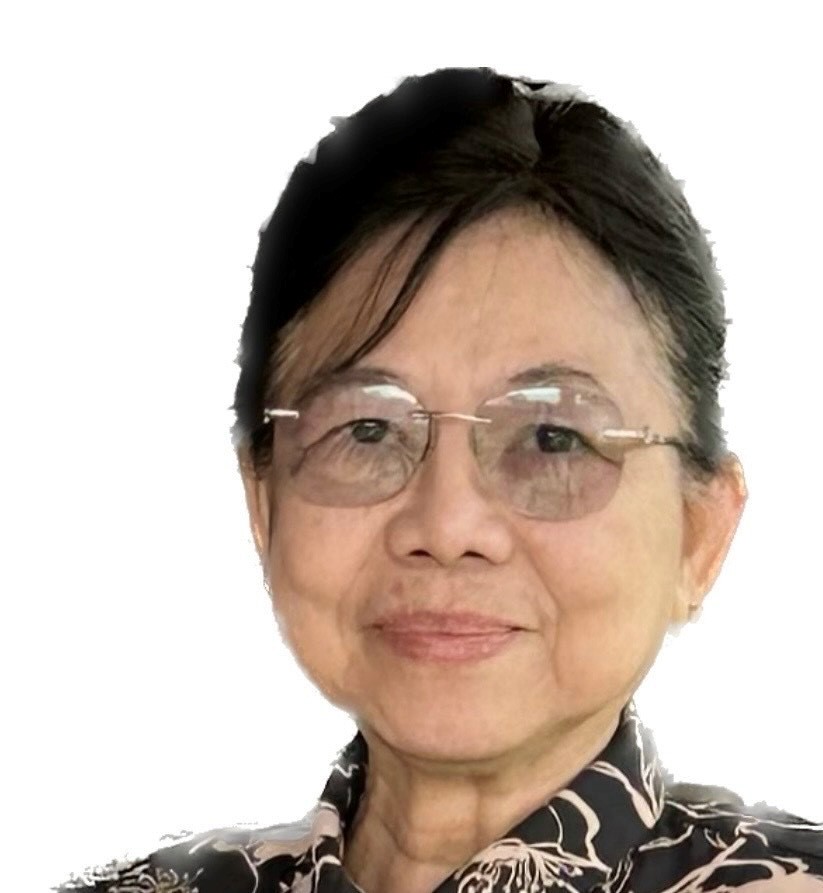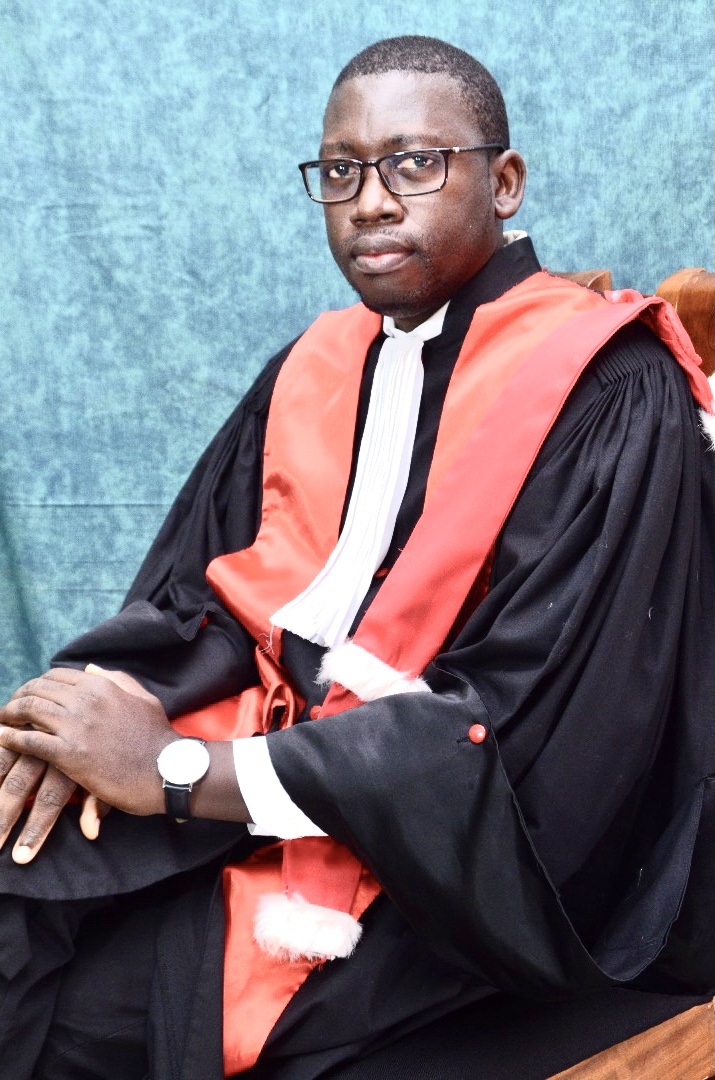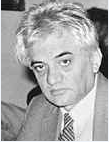Research Article
Surgical Management of Chronic Postoperative Inguinal Pain by Laparoscopic Triple Neurectomy. Adaptations of the Technique to Avoid Morbidity. Regarding a Case Operated by Totally Extraperitoneal Hernioplasty
- Beatrice Leonardi 1*
- María Abellán López 2
- Marisol Muelas Martinez 3
- Pablo Del Pozo Gil De Pareja 3
- Víctor Soria Aledo 4
1Head of the Abdominal Wall Unit. Department of General and Digestive Surgery. J. Mª Morales Meseguer University Hospital. Murcia.
2Resident CGD. Department of General and Digestive Surgery. J. Mª Morales Meseguer University Hospital. Murcia.
3FEA Assistant. Abdominal Wall Unit. Department of General and Digestive Surgery. J. Mª Morales Meseguer University Hospital. Murcia.
4Head of Service. Department of General and Digestive Surgery. J. Mª Morales Meseguer University Hospital. Murcia.
*Corresponding Author: Beatrice Leonardi, Head of the Abdominal Wall Unit. Department of General and Digestive Surgery. J. Mª Morales Meseguer University Hospital. Murcia.
Citation: Beatrice L, López M A, Martinez M M, Pareja P D P G D, Aledo V S. (2025). Surgical Management of Chronic Postoperative Inguinal Pain by Laparoscopic Triple Neurectomy. Adaptations of the Technique to Avoid Morbidity. Regarding a Case Operated by Totally Extraperitoneal Hernioplasty. Journal of Clinical Surgery and Surgical Research, BioRes Scientia Publishers. 4(1):1-8. DOI: 10.59657/2992-9989.brs.25.033
Copyright: © 2025 Beatrice Leonardi, this is an open-access article distributed under the terms of the Creative Commons Attribution License, which permits unrestricted use, distribution, and reproduction in any medium, provided the original author and source are credited.
Received: February 13, 2025 | Accepted: February 28, 2025 | Published: March 13, 2025
Abstract
Introduction: Chronic postoperative inguinal pain is currently the most serious complication of hernioplasty, with a frequency of 5-15%. Neurectomy as a surgical option is little known, and its results and efficacy in pain control are scarcely known.
Clinical Case: A 41-year-old male underwent bilateral inguinal hernia surgery using a totally extraperitoneal laparoscopy. Since surgery, he has had incapacitating neural pain. He is treated in a pain unit with no improvement despite pharmacological therapy, infiltrations and radiofrequencies. After completing the study with mapping, tomography and electromyography, he is diagnosed with bilateral genitofemoral neural injury and sent to surgery for laparoscopic neurectomy. A different neural pattern is identified on each side and triple neurectomy is performed without incident. He is discharged within 24 hours, with complete denervation mapping. After 3 months, he does not require analgesic treatment.
Conclusion: The increase in laparoscopic surgery for primary inguinal hernia may lead to a serious problem in patients with chronic neural pain in the future, by modifying the usual working space for neurectomy. The difficulty in dissecting the retroiliac and retroinguinal spaces may increase the risk of inadvertent neural injuries, due to poor identification of the entire lumbar plexus. Neural anatomical variability, even in the same patient, advises triple neurectomy as the most effective technical option. The first goal of DICP surgery should be to avoid additional morbidity. Pseudohernia can be minimized with a distal neurectomy, near the iliac spine, over the transverse muscle (point A), especially in cases of bilateral pain.
Keywords: groin pain; neuralgy; hernioplasty; laparoscopy; neurectomy; ilioinguinal nerve; genitofemoral nerve
Introduction
Chronic postoperative inguinal pain (CPIP) has been an underestimated problem for years. Nowadays, advances in the laparoscopic approach and the growing demand of patients for a better quality of life have focused on the issue of CPIP as one of the objectives to be resolved in the process of hernia repair, the frequency of which could exceed 30% [1-3]. The wide diffusion of the laparoscopic approach in our hospitals and among young surgeons in particular, has increased the number of patients operated on by this approach as the first option in the case of primary hernias, which entails a great problem when a reintervention in the posterior plane is necessary due to CPIP or recurrence, a fact not known until now in the history of the management of hernia complications. Triple neurectomy (TN) or selective neurectomy (SN) surgery has been published, most of the time without scientific or anatomical support [4-6]. The aim of this paper is to present a case of CPIP after primary hernia repair by bilateral totally extraperitoneal laparoscopy (TEP), and to analyze the current controversies in the surgical management of these patients.
Case Presentation
A 41-year-old male with a 4-year history of transverse myelitis with anti-MOG antibodies, initially treated with corticosteroids and rituxibmab, now stable and without treatment. Other history: carrier of G20210A mutation of the thrombin gene, appendectomy in childhood, and crystal arthropathy in the shoulder. He underwent surgery for bilateral inguinal hernia by extraperitoneal laparoscopy (TEP) with PVDF mesh (Dynamesh endolap 3D) and fixation with Glubran glue, according to the recovered report. Since surgery, he has had intense, incapacitating neural-type pain, radiating to the scrotal region and inner side of both thighs. He is managed in the Pain Unit of the Anesthesia Service with a progressive pharmacological scale without improvement, with infiltrations, blocks and radiofrequencies with temporary relief, but reappearance of incapacitating pain.
The differential diagnosis is completed with ultrasound (tests with normal flow and no lesions, no hydrocele or atrophy), tomography and nuclear magnetic resonance (post-surgical changes after hernioplasty with no other bone or muscle lesions or recurrence), and electromyography with somatosensory evoked potentials (PESS) (normal femoral cutaneous nerve and ilioinguinal and iliohypogastric nerves, with bilateral genitofemoral neural injury, especially on the left, with decreased amplitudes greater than 50%). Given the persistence of the CPIP, affectation of normal life and poor response to conservative treatments, referral to surgery for laparoscopic neurectomy of the bilateral genitofemoral nerve is considered.
The patient was operated on electively, after a new clinical study and mapping by the surgeon, which showed involvement of the dermatomes innervated by the ilioinguinal (II) and genitofemoral (GF) nerves (Figure 1). It was concluded that the inguinodynia was of neuropathic origin, with possible involvement of the II and GF with an intensity of nine on the visual analogue scale (VAS). The appropriate informed consent was obtained from the patient and his family, and a preperitoneal transabdominal technique was performed, according to a previous publication [7].
Figure 1: Image of the dermatome mapping obtained preoperatively: areas of hypersensitivity and pain corresponding to the regions of the ilioinguinal nerve (II) and the genitofemoral nerve on the left side (GF) are shown.
Surgical Technique
Under general anesthesia, with the patient in the left lumbotomy position with renal pile, pneumoperitoneum is performed with a Veress needle at the subcostal level and three ports are placed: one 10 mm for the optics in the pararectal line at the umbilical level, and two 5 mm triangulated ports in the anterior axillary line, one subcostal and the other on the anterior superior iliac spine (ASIS). The pelvis and the operated inguinal region are assessed with fibrosis and mesh retraction (Figure 2). The peritoneum is opened over Toldt's coalescence fascia, the thickness of the wall is dissected transversally up to the plane of the anterior thoracolumbar fascia and we see the lumbar plexus on the left side: a single trunk of the IH-II nerves and the GF nerve with a type 2 pattern on the psoas muscle (Figure 3). Once the identification was completed, the neurectomy of the IH-II nerve on the transverse abdominis muscle near the PSIS and of the GF nerve on the middle body of the psoas was performed, and the samples were sent for histopathological study. Hemostasis was checked, the peritoneum was not closed, and the trocars were removed with port closure. The same maneuvers were repeated on the right side of the patient: IH-II type 1, identifying muscle branches before their section, and GF nerve type 1, not bifurcated until it entered the posterior inguinal fibrosis (Figure 4).
Figure 2:Postsurgical changes after TEP hernioplasty, fibrosis and local retraction with retracted mesh.
Figure 3: Identification of the psoas muscle and the genitofemoral nerve on the left side (GF).
A: arrangement of two neural branches on the muscular body of the psoas under its fascia. Type 2 pattern (two independent branches from their intramuscular exit) (rF, rG). B. Fascial dissection of the two branches towards the cranial and caudal for their correct identification.
Figure 4: Neural pattern on the right side.
A. IH-II Type 1, on the lateral border of the quadratus lumborum muscle (QL), in an oblique direction to the posterior superior iliac spine (PSIS), on the transverse abdominis muscle (AT). Dissection of its trunk allows us to see its composition of various secondary branches.
B. Genitofemoral nerve (GF) on the right side, Type 1 pattern (a single, very thick trunk), emerging from the body of the psoas muscle in a caudal direction, separated from its fascia and the iliac vessels. The femoral cutaneous nerve (FC) can be seen in the background on the iliac muscle (Im), in a laterocaudal direction until it emerges below the inguinal ligament.
The postoperative period was favorable, with no hospital complications, and the patient was discharged after 24 hours. The control from consultations at 1,3 and 6 months, confirmed a complete denervation mapping of the bilateral inguinal region, with integrity of the femoral nerve, assessed by extension of the leg, and of the obturator nerve by thigh adduction (Figure 5), a progressive decrease in his medication with complete cessation of analgesic treatment at 3 months.
Figure 5: Postoperative dermatome mapping. Bilateral denervation is shown except for some isolated areas of pain (red dot) with no neural correspondence (remember that the non-resected mesh effect may persist).
Discussion
In the literature, we have hardly any reliable references on inguinal neurectomy in the last 20 years. Usually, they are publications of clinical cases using the open approach and after a Lichtenstein operation. The use of the laparoscopic technique as a treatment option for CPIP after a first laparoscopic repair is exceptional (Table 1). However, the increased demand for this approach in primary inguinal hernia can lead to a serious therapeutic problem from the approach to this complication. If we add the enormous frequency of hernia pathology in our society, we may be starting a serious health problem for the near future: patients with CPIP with posterior space intervened. The case we present perfectly illustrates this new trend. A young man consults for a small left inguinal hernia and ends up being operated on by TEP laparoscopy on both sides. Every surgeon should remember that no operation is “free” and in the case of CPIP appearing, laparoscopy as a first option means a loss of virgin surgical space to be able to resolve the complication with greater safety. In our case, we had to adapt the technique, avoiding entry into the retroinguinal space due to the fibrosis and inflammation caused by the mesh, and reducing the dissection only to the retrolumbar space to reduce bleeding and uncontrolled peritoneal rupture. When working in a smaller space, the identification of neural patterns is more difficult and the risk of inadvertent neural injury increases, as does the risk of bleeding due to vascular injury. Perhaps in the coming years, we should more strongly advise Surgical Residents to learn a good knowledge of various techniques tailored to the patient. Not everything can be reduced to a Lichtenstein or a laparoscopy.
Table 1: Literature review: experience in laparoscopic treatment of chronic postoperative inguinal neural pain. Published series with more than 10 cases.
| Author | N | Operatión | Morbility | Ef |
| Moreno-Egea (2025) ** | 65 | TAP | 1 Inadvertent injury to the FC (1.5) 1 Retroperitoneal hematoma. (1.5) 1 Residual Orchialgia (1.5) | 70 |
| Pedersen (2020)30 | 33 | TAP | 1 Diaphragm perforation (3) | 77 |
| More (2016) * | 62 | TEP | 20 Hipersensibility (32.2) 19 Pseudohernia (30.6) 14 Residual pain from malloma (22.6) 4 Orchialgia (6.4) 1 Diaphragm perforation (1.6) 1 Retroperitoneal hemorrhage (1.6) | 70 |
| Giger y col. (2009) | 39 | TEP | 1 Diaphragm perforation (2.5) 1 Reoperation for hematoma (2.5) 7 Persistent pain requiring tt. (18) | 69 |
Series of >10 patients treated for chronic inguinal pain with triple neurectomy by laparoscopic approach. TAP: transabdominal extraperitoneal approach; TEP: totally extraperitoneal approach; FC: femorocutaneous nerve; Ef: Effectiveness (%); tt.: treatment. *Includes the series by Chen et al. from 2013 of 20 cases (previous study) [9]. **Includes the series by Moreno-Egea from 2016 and 2021 (previous study) [7,27].
When to Indicate Surgery in CPIP?
With a little common sense, it seems logical to think that the need to operate should not be raised only by the surgeon, nor indicated only by the anesthesiologist, since each specialist always has to indicate the treatment that he or she is most familiar with. Possibly in the case of CPIP it should be the patient who has the final decision, always following the guidance of the multidisciplinary team that treats him or her.
It must be accepted that none of the diagnostic tests, no matter how many we ask for or how detailed they are, will facilitate the decision of an aggressive surgical management. Today, although without consensus, most authors consider surgery as the last possible resort, after using conservative and radiological measures, well controlled in a Specialized Unit [7-12]. Another problem to consider is, if it has been decided to operate, who should perform the operation? Again, the most prudent thing would be to recommend a surgeon with adequate anatomical knowledge and a minimum experience that guarantees the safety of the process. Song et al. They consider the number of ten neurectomies as the limit of the learning curve to ensure safe technique [13].
Which Operation Should be Considered: Triple Neurectomy or Selective?
Based on the knowledge of the “anatomical variants”, which are over 60%, the most sensible thing to do would be to always recommend a TN to avoid early failures due to unnoticed nerve communicators or residual nerve branches that could still transfer the painful stimulus [14-20]. Our case is an example of the high rate of variability, even in the same patient each side can have a different neural pattern. If we give more value to the patient's clinical picture and to the dermatome mapping, we could try to be less aggressive and only perform a SN. In this case, the aim is to minimize the dissection, reduce the denervated area and the morbidity of the process [5,6,21-24]. Possibly, good judgment between both methods, as in a balance, would be the most advisable in this unknown issue of CPIP. Let's go back to our case. If we accept the diagnosis referred by the Pain Unit and the EMG, we would consider a SN of the GF nerve. However, when mapping, we see that it hardly corresponds to a single territory. After speaking with the patient and explaining the possibilities, TN or SN, the final decision must be well agreed upon and understood by all parties involved. We will no longer have any more surgical options after the operation. Lee and Dellon postulate that the clinical history and physical examination should be sufficient to differentiate the affected nerve in patients with CPIP [17]. It seems prudent to complete the differential diagnosis process as much as possible, obtain a mapping, an EMG, a nerve block, and complete a pharmacological treatment for at least 6 months. If satisfactory pain control is not achieved with this conservative approach, after appropriate consent, a TN can be indicated as a safe and successful option [8].
How to Avoid Adding Morbidity and Surgical Pain to an Already Predisposed Patient?
The most frequent complications of surgery are hemorrhage, inadvertent neural injury, and the appearance of a pseudohernia of the abdominal wall due to muscle denervation (Table 2). The first is avoided with an adequate knowledge of the retrolumboiliac space, its fascia and its vascularization, the second requires an adequate knowledge of the patterns of presentation of the lumbar plexus and the path of the different branches in the extraperitoneal space to achieve an accurate neural identification [25-27].
Table 2: Phases of triple neurectomy surgery
| Technique (3 times) | Surgical anatomy (3 theories) | Morbidity (complications) |
| Identification | Theory of the retrolumbar and retroiliac triangles | Neural injuries |
| Disecction | Fascial theory | Vascular injuries |
| Section | Neural cut-off point theory point A (versus C) | Pseudohernia (muscle atrophy due to denervation) |
The third complication, pseudohernia, was of particular concern in our case, because it could represent a new problem for the patient, adding worry and pain to his already deteriorating life. We must always inform him of this possibility, especially if we plan a bilateral operation that denervates almost the entire lower part of the abdominal wall. The appearance depends on the neurectomy technique. In the classic description, the cut-off points for nIH and nII is considered to be the one located on the quadratus lumborum muscle [9] or cut-off point “C”, proximal and cranial in the extraperitoneal space and which leaves the lateral muscles of the abdominal wall without innervation. With this cut-off point, pseudohernia appears in 30-100% of cases [28,29]. To avoid this problem, we have proposed a new cut-off point “A” (anatomical), located at the intermuscular level near the iliac crest. This neurectomy point respects the muscular branches in the extraperitoneal space and guarantees the innervation of the posterolateral and gluteal abdominal wall, avoiding weakness due to denervation and pseudonernia as morbidity. Our experience demonstrates the safety of this anatomical cut-off point compared to the classic one [29].
Conclusion
The case we present perfectly illustrates the problems related to the management of chronic inguinal pain:
1.The increase in laparoscopic surgery for primary inguinal hernia can lead to a serious problem in patients with CPIP, by modifying the working space necessary for a safe neurectomy.
2.The difficulty in dissecting the retroiliac and retroinguinal spaces can increase the risk of inadvertent neural injuries, due to poor identification of the entire lumbar plexus.
3.The neural anatomic variability, even in the same patient, advises triple neurectomy as the most effective technical option.
4.No diagnostic test, not even mapping, can ensure the success of the surgery.
5.The first objective of CPIP surgery should be to avoid adding morbidity. Pseudohernia can be minimized with a distal neurectomy, close to the PSIS, on the transverse muscle (point A), especially in cases of bilateral pain.
Declarations
Ethics approval and consent-the study was conducted according to the guidelines of the Declaration of Helsinki and approved by Universitary General Hospital ethical committee. Patient consent for publication-consent was obtained from the patient for publication of the patient data image included in this case report.
Conflict of interest
No conflict of interest
Funding
No fund taken for this case report
References
- Valvekens E, Nijs Y, Miserez M. (2015) Long-term outcome of surgical treatment of chronic postoperative groin pain: a word of caution. Hernia, 19(4):587-594.
Publisher | Google Scholor - Loos MJ, Roumen RM, Scheltinga MR. (2007). Chronic sequelae of common elective groin hernia repair. Hernia, 11:169-173.
Publisher | Google Scholor - Bjurstrom MF, Nicol AL, Amid PK, Chen DC. (2014). Pain control following inguinal herniorrhaphy: current perspectives. J Pain Res, 7:277-290.
Publisher | Google Scholor - Krähenbühl L, Strifflerler H, Baer HU, et al. (1997) Retroperitoneal endoscopic neurectomy for nerve entrapment after hernia repair. Br J Surg, 84:216-219.
Publisher | Google Scholor - Muto CM, Pedana N, Scarpelli S, et al. (2005). Inguinal neurectomy for nerve entrapment alter open/laparoscopic hernia repair using retroperitoneal endoscopic approach. Surg Endosc, 19:974-976.
Publisher | Google Scholor - Giger U, Wente MN, Büchler MW, et al. (2009) Endoscopic retroperitoneal neurectomy for chronic pain after groin surgery. Br J Surg, 96(9):1076-1081.
Publisher | Google Scholor - Moreno-Egea A. (2016). Surgical management of postoperative chronic inguinodynia by laparoscopic transabdominal preperitoneal approach. Surg Endosc, 30(12):5222-5227.
Publisher | Google Scholor - Moreno-Egea A. (2019). Multidisciplinary manual for the management of chronic inguinal pain. Valencia: Soc. Hispanoam. Hernia Valencia.
Publisher | Google Scholor - Chen DC, Hiatt JR, Amid PK. (2013). Operative management of refractory neuropathic inguinodynia by a laparoscopic retroperitoneal approach. JAMA Surgery, 148(10):962-967.
Publisher | Google Scholor - Taha-Mehlitz S, Taha A, Janzen A, Saad B, Hendie D, Ochs V, Krähenbühl L. (2023) Is pain control for chronic neuropathic pain after inguinal hernia repair using endoscopic retroperitoneal neurectomy effective? A meta-analysis of 142 patients from 1995 to 2022. Langenbecks Arch Surg, 408(1):39.
Publisher | Google Scholor - Ducic I, West J, Maxted W. (2008). Management of chronic postoperative groin pain. Ann Plast Surg, 60:294-298.
Publisher | Google Scholor - Stulz P, Pfeiffer KM. (1982). Peripheral nerve injuries resulting from common surgical procedures in the lower portion of the abdomen. Arch Surg, 117(3):324-327.
Publisher | Google Scholor - Song JW, Wolf JS, McGillicuddy JE, et al. (2011). Laparoscopic triple neurectomy for intractable groin pain: technical of 3 cases. Neurosurgery, 68:339-346.
Publisher | Google Scholor - Lange JFM, Kaufmann R, Wijsmuller AR, Pierie JPEN, Ploeg RJ, Chen DC et al. (2015). An international consensus algorithm for management of chronic postoperative inguinal pain. Hernia, 19:33-43.
Publisher | Google Scholor - Werner MU. (2014). Management of persistent postsurgical inguinal pain. Langenbecks Arch Surg, 399:559-569.
Publisher | Google Scholor - Madura JA, Madura JA II, Copper CM, Worth RM. (2005). Inguinal neurectomy for inguinal nerve entrapment: an experience with 100 patients. Am J Surg, 189:283-287.
Publisher | Google Scholor - Lee CH, Dellon AL. (2000). Surgical management of groin pain of neural origin. J Am Coll Surg, 191:137-142.
Publisher | Google Scholor - Kim DH, Murovic JA, Tiel RL, Kline DG. (2005). Surgical management of 33 ilioinguinal and iliohypogastric neuralgias at Louisiana State University Health Sciences Center. Neurosurgery, 56:1013-1020.
Publisher | Google Scholor - Holloran-Schwartz MB. (2014). Surgical evaluation and treatment of the patient with chronic pelvic pain. Obstet Gynecol Clin N Am, 41:357-369.
Publisher | Google Scholor - Moreno-Egea A. (2021). Surgical anatomy for abdominal wall specialists. Photographic atlas of dissection. Ed. Soc. Hispanoam. Hernia Valencia.
Publisher | Google Scholor - Ramshaw B, Vetrano V, Jagadish M, Forman B, Heidel E, Mancini M. (2017). Laparoscopic approach for the treatment of chronic groin pain after inguinal hernia repair: Laparoscopic approach for inguinodynia. Surg Endosc, 31(12):5267-5274.
Publisher | Google Scholor - Engelen M, Dilen K, Baten E. (2017). Laparoscopic treated neuralgia after inguinal hernia repair: case report and literature review. Acta Chir Belg, 117(5):283-289.
Publisher | Google Scholor - Bjurström MF, Nicol AL, Amid PK, Lee CH, Ferrante FM, Chen DC. (2017). Neurophysiological and clinical effects of laparoscopic retroperitoneal triple neurectomy in patients with refractory posth- erniorrhaphy neuropathic inguinodynia. Pain Pract Off J World Inst Pain, 17:447-459.
Publisher | Google Scholor - Narita M, Jikihara S, Hata H, Matsusue R, Yamaguchi T, Otani T, Ikai I. (2017). Surgical experience of laparoscopic retroperitoneal triple neurectomy for a patient with chronic neuropathic inguinodynia. Int J Surg Case Rep, 40:80-84.
Publisher | Google Scholor - Moreno-Egea A. (2016). Anatomical basis for safe planning of selective laparoscopic approach to the ilioinguinal nerve: Description of preperitoneal transabdominal neurectomy. Rev Hispanoam Hernia, 4(2):51-58.
Publisher | Google Scholor - Moreno-Egea A. (2020). From classical triple neurectomy to Moreno-Egea triple fascial neurectomy. Rev Hispanoam Hernia, 8(2):107-110.
Publisher | Google Scholor - Moreno-Egea A. (2021). A study to improve identification of the retroperitoneal course of iliohypogastric, ilioinguinal, femorocutaneous and genitofemoral nerves during laparoscopic triple neurectomy. Surg Endosc, 35(3):1116-1125.
Publisher | Google Scholor - Moore AM, Bjurstrom MF, Hiatt JR, Amid PK, Chen DC. (2016). Efficacy of retroperitoneal triple neurectomy for refractory neuropathic inguinodynia. Am J Surg, 212(6):1126-32.
Publisher | Google Scholor - Moreno-Egea A. (2022). Iliohypogastric nerve cut-off point in triple neurectomy for chronic postoperative inguinal pain. Rev Hispanoam Hernia, 10(1):27-29.
Publisher | Google Scholor - Pedersen KF, Chen DC, Kehlet H, Stadeager MW, Bisgaard T. (2021). A Simplified clinical algorithm for standardized surgical treatment of chronic pain after inguinal hernia repair: a quality assessment study. Scand J Surg, 110(3):359-367.
Publisher | Google Scholor













